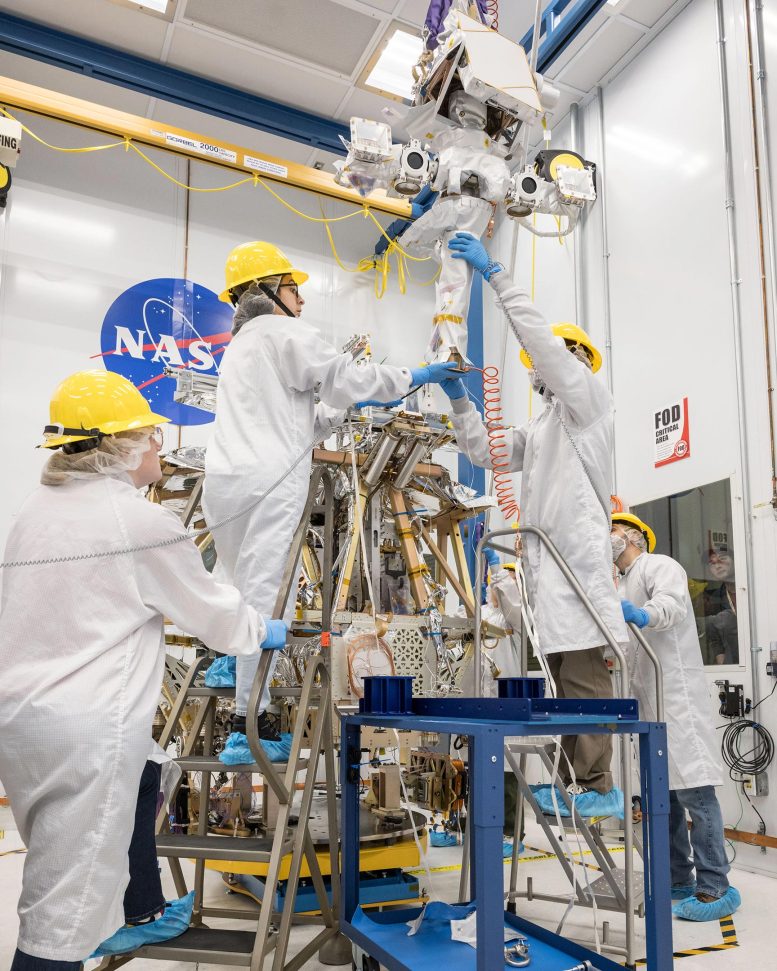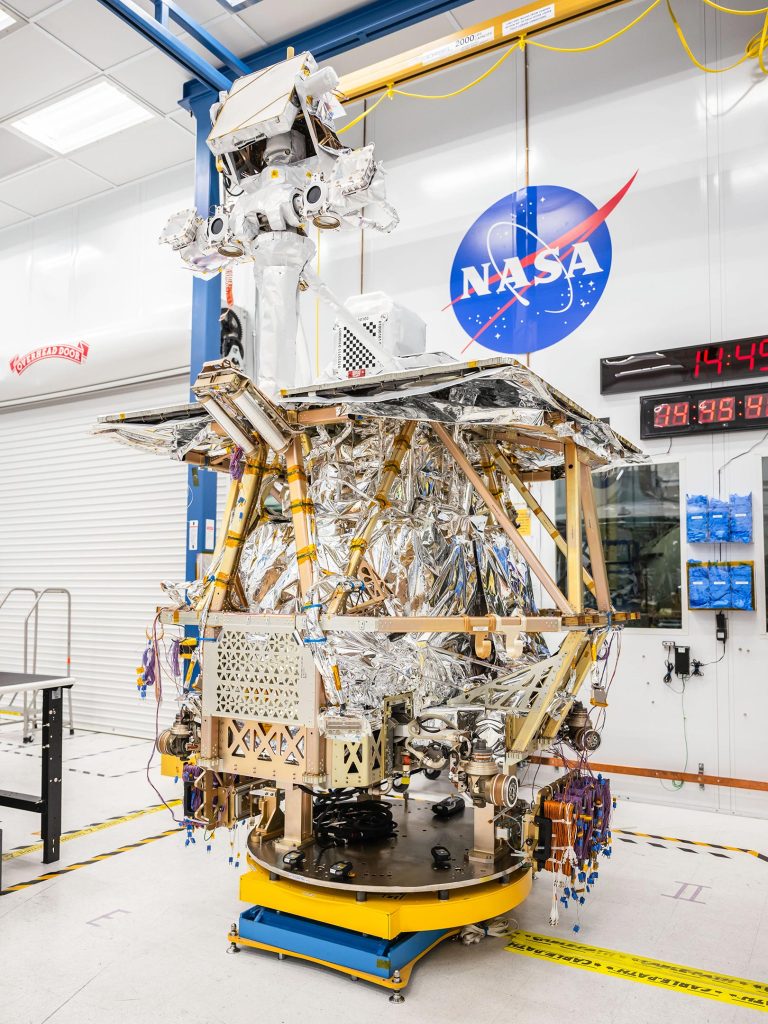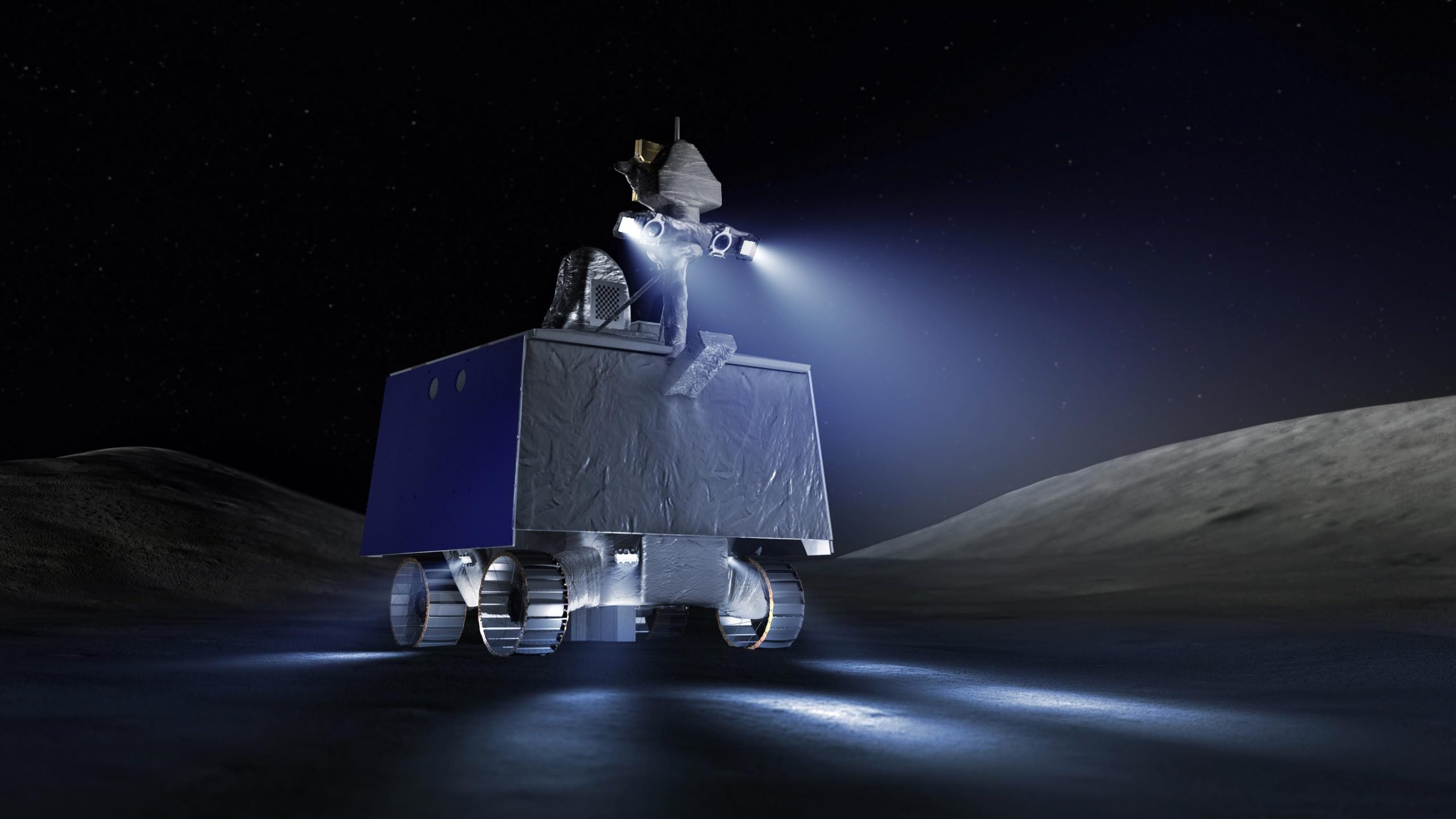An artist’s concept of the finished design of NASA’s Volatiles Investigating Polar Exploration Rover (VIPER). VIPER will provide an up-close look at the location and concentration of ice and other resources at the Moon’s south pole, bringing us a major step closer to NASA’s ultimate goal of a long-term presence on the Moon – eventually enabling exploration of Mars and beyond. Photo credit: NASA/Daniel Rutter
VIPER Rover’s new mast expands its ability to explore and study the lunar south pole and features advanced navigation instruments and communications antennas essential to its 100-day mission.
NASA’s VIPER – short for Volatiles Investigating Polar Exploration Rover – is now bigger and more powerful than ever before. And that’s thanks to his mast.
VIPER’s mast and the instruments attached to it closely resemble the rover’s “neck” and “head.” The mast instruments are designed to help the team of rover drivers and real-time scientists send commands and receive data as the rover navigates dangerous crater slopes, boulders and locations at risk of communications failure. The team will use these instruments along with four science payloads to explore the lunar south pole. During its approximately 100-day mission, VIPER seeks to better understand the origins of water and other resources on the Moon as well as the extreme environmental conditions NASA plans to send astronauts as part of the Artemis campaign.

A team of engineers lifts the mast into place on NASA’s VIPER robotic lunar rover in a clean room at NASA’s Johnson Space Center in Houston. Photo credit: NASA/Helen Arase Vargas
VIPER’s navigation and communication capabilities
The top of the VIPER mast is located approximately 2.5 meters above the wheel rims and is equipped with two stereo navigation cameras, a pair of powerful LED spotlights, and a low and high gain antenna for data transmission and data from the Deep Space Network (DSN) Receive antennas on Earth.
The stereo navigation cameras – the rover’s “eyes” – are mounted on a gimbaled portion of the mast, allowing the team to pan them up to 400 degrees and tilt them up and down up to 75 degrees. The VIPER team will use the navigation cameras to capture comprehensive panoramas of the rover’s surroundings and images to detect and further study surface features such as rocks and craters as small as 10 cm in diameter (or about the length of a pencil). from a distance of up to 15 meters. And because the navigation cameras are mounted high, the VIPER team gets a near-human-like perspective as the rover explores areas of scientific interest around the Moon’s south pole.

NASA’s VIPER robotic lunar rover stands taller than ever after engineers integrated its mast into a clean room at NASA’s Johnson Space Center in Houston. Photo credit: NASA/Josh Valcarcel
Unique features and data transfer
Due to the extreme light and darkness conditions on the Moon, VIPER will be the first planetary rover to have headlights. The headlights cast a narrow beam of high beam – similar to a car’s high beam – to help the team see obstacles or interesting terrain features that would otherwise remain hidden in the shadows. The lights, positioned next to the rover’s two navigation cameras, feature arrays of blue LEDs that the rover navigation team determined would provide the best visibility given the challenging lighting conditions on the Moon.
To transmit large amounts of data across the 240,000 miles (384,000 km) between Earth and the Moon, VIPER has a gimbaled, precisely aimed, high-power antenna that sends information along a very focused, narrow beam. Its low-gain antenna also sends data, but uses radio waves at a much lower data rate. The ability of the antennas to maintain the correct orientation even while driving serves a crucial function: Without them, the rover cannot receive commands while traveling on the moon and cannot send any of its data back to Earth so that scientists can achieve their mission goals. All of this data is then transmitted from the DSN to the Multi-Mission Operations and Control Center at NASA’s Ames Research Center in Silicon Valley, California, where rover operations are based.
Testing and mission preparation
Before installing it on the rover, engineers subject the mast to various tests. This included time in a thermal vacuum chamber to check that the white coating surrounding the mast was insulating as intended. After integrating the mast into the clean room at NASA’s Johnson Space Center in Houston, the team also successfully conducted tests of its components and sent data through the rover for the first time using its antennas.
VIPER is part of the Lunar Discovery and Exploration Program and is managed by the Planetary Science Division of NASA’s Science Mission Directorate at NASA Headquarters in Washington. VIPER will launch to the Moon aboard Astrobotic’s Griffin lunar lander SpaceX Falcon Heavy rocket as part of NASA’s Commercial Lunar Payload Services initiative. It will reach its destination at Mons Mouton, near the Moon’s south pole.
